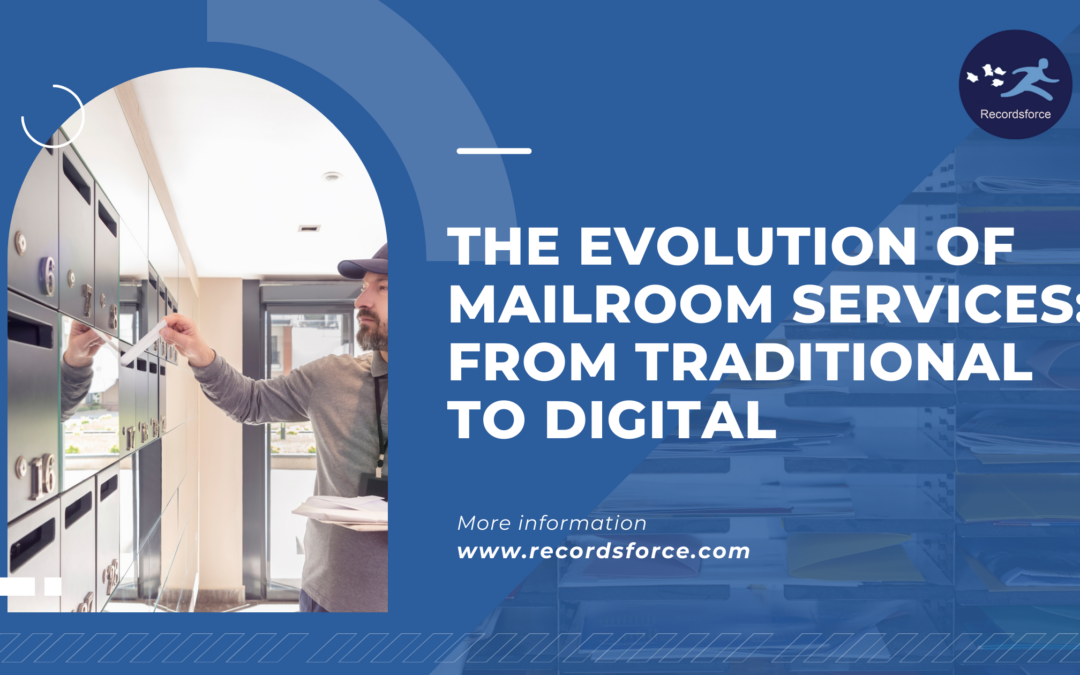The way businesses manage their mailrooms has undergone a remarkable transformation. The traditional mailroom, once synonymous with stacks of paper, manual sorting, and slow processes, has evolved into a digital powerhouse of efficiency and convenience. We will discuss the evolution of mailroom services, from the traditional to the digital era.
The Traditional Mailroom
The birth of the mailroom: Historically, mailrooms were established to handle incoming and outgoing paper mail. They were bustling hubs within organizations, often staffed with mail clerks that were responsible for sorting, distributing and archiving physical documents. This manual and time-consuming process left plenty of room for error and inefficiency.
Challenges of Traditional Mailrooms
Delays: Physical mail took time to arrive and be distributed, causing delays in communication.
Human Error: Sorting and delivering mail manually could result in misplacements or lost documents.
Storage Costs: Managing vast archives of physical documents is costly and space-intensive.
Limited Accessibility: Information was locked in physical form, making it difficult to access, especially remotely,
The Digital Transformation
With the advancements of technology, the traditional mailroom has given way to a digital age. Here’s how:
- Digital Mail Processing: The advent of scanning technology allowed for the conversion of physical documents into digital formats. Mail is now received, scanned, and converted into electronic files, making it easier to manage and distribute.
- Automation: Intelligent software and automation tools, like workflow, have streamlined mail sorting and routing processes. Optical Character Recognition (OCR) technology can recognize text in scanned documents, further reducing manual efforts.
- Cloud Storage: The use of cloud storage solutions allows organizations to securely store and access their digital mail and documents from anywhere, eliminating the need for physical storage space.
- Accessibility: Digital mailroom services enable remote access to mail and documents, improving collaboration and productivity for remote and dispersed teams.
- Enhanced Security: Digital mailrooms often come with robust security features, including encryption and access controls, ensuring the protection of sensitive information.
- Cost Efficiency: The reduction of physical mail handling, paper usages, and storage costs results in significant cost savings for businesses.
Benefits of Digital Mailroom Services
This shift from traditional to digital mailroom services has brought about numerous advantages for businesses:
- Speed & Efficiency: Digital mail processing is much faster and more efficient than manual sorting, ensuring that important information reaches its destination promptly.
- Accuracy: Automation reduces the risk of human errors, improving the accuracy of your important documents.
- Cost Savings: Going digital reduces costs associated with physical mail, storage and paper consumption.
- Remote Access: Employees can access their documents remotely, enabling flexible work arrangements and better collaboration.
- Environmental Impact: Digital mailrooms contribute to environmental sustainability by reducing paper usage and waste.
- Compliance & Security: Enhanced security measures ensure that sensitive information is protected and that compliance requirements are met.
Conclusion
The evolution of mailroom services from traditional to digital ones represents a significant leap forward in efficiency, accuracy and convenience for businesses. Digital mailroom services have become indispensable tools for modern organizations seeking to streamline their operations, reduce costs, and stay competitive in an increasingly digital world. Embracing this transformation can unlock new possibilities for productivity and growth, while reducing the environmental footprint associated with traditional mailrooms. It’s safe to say the future of mailroom services is digital, and the possibilities are endless.

